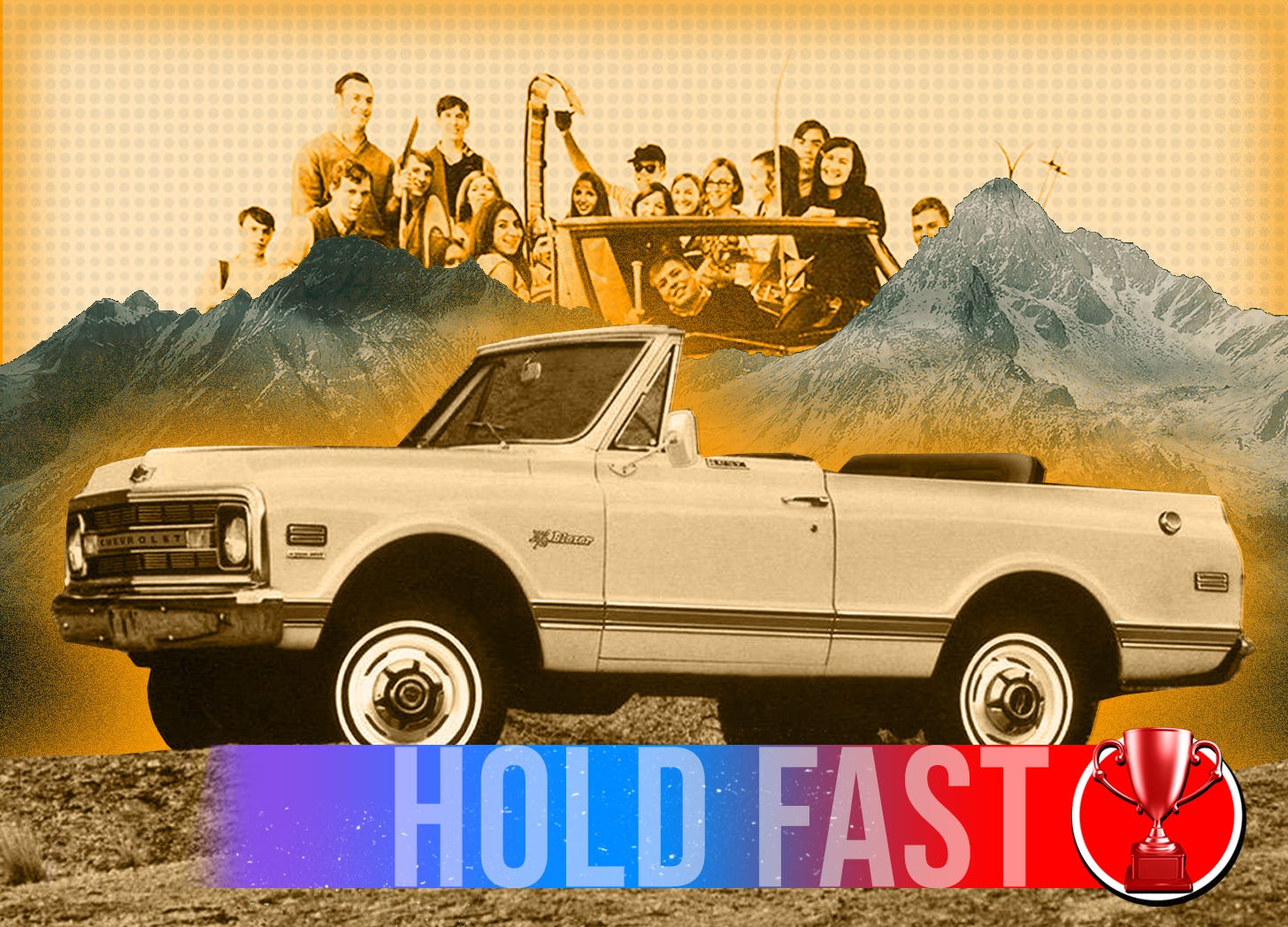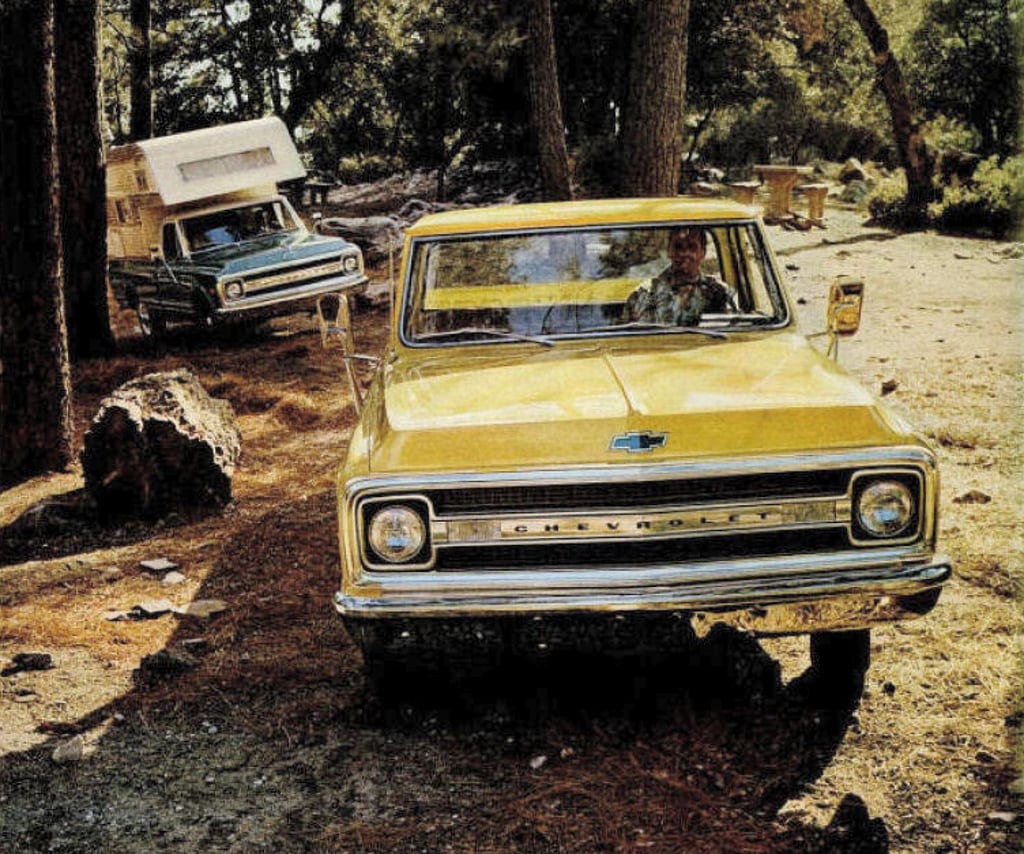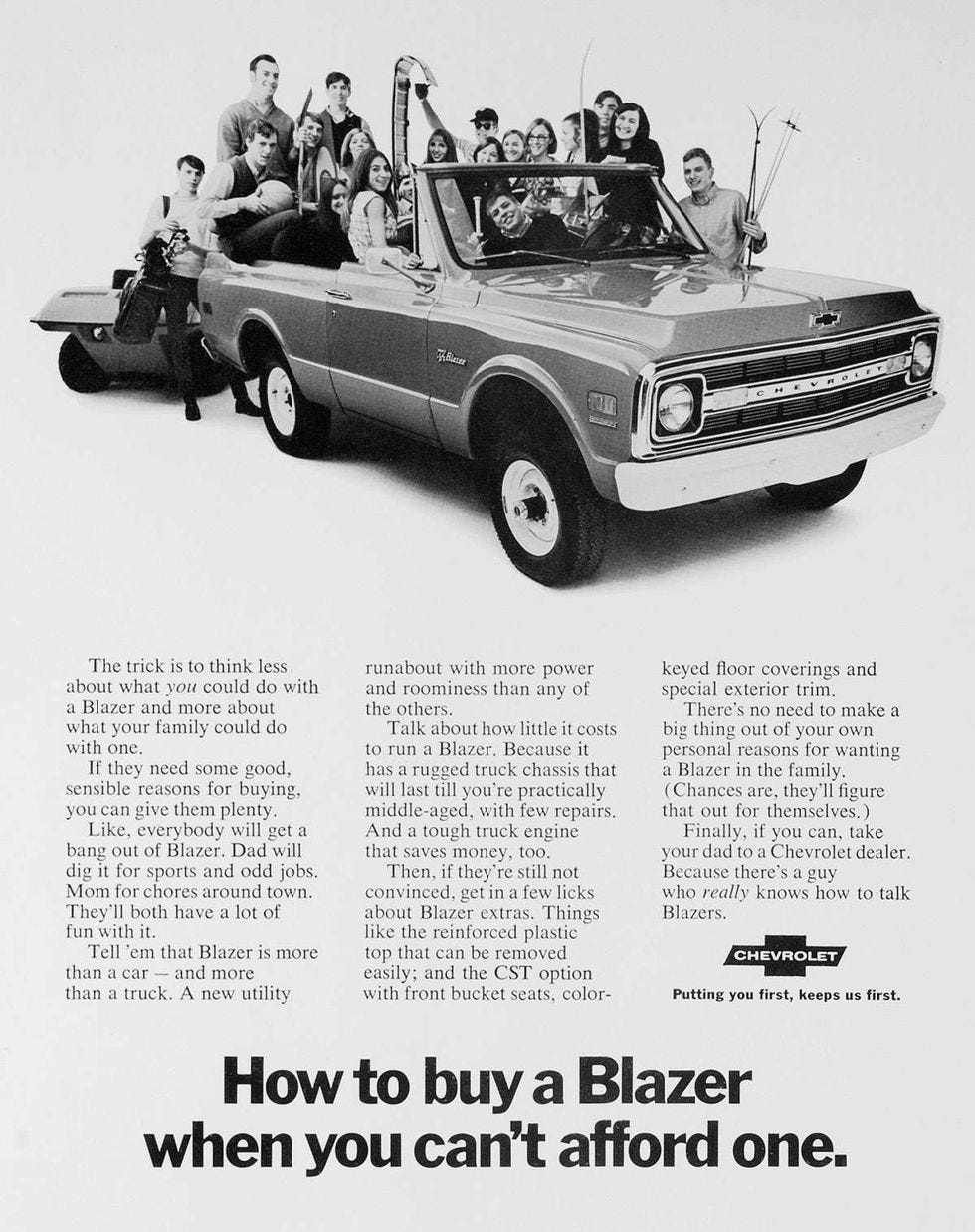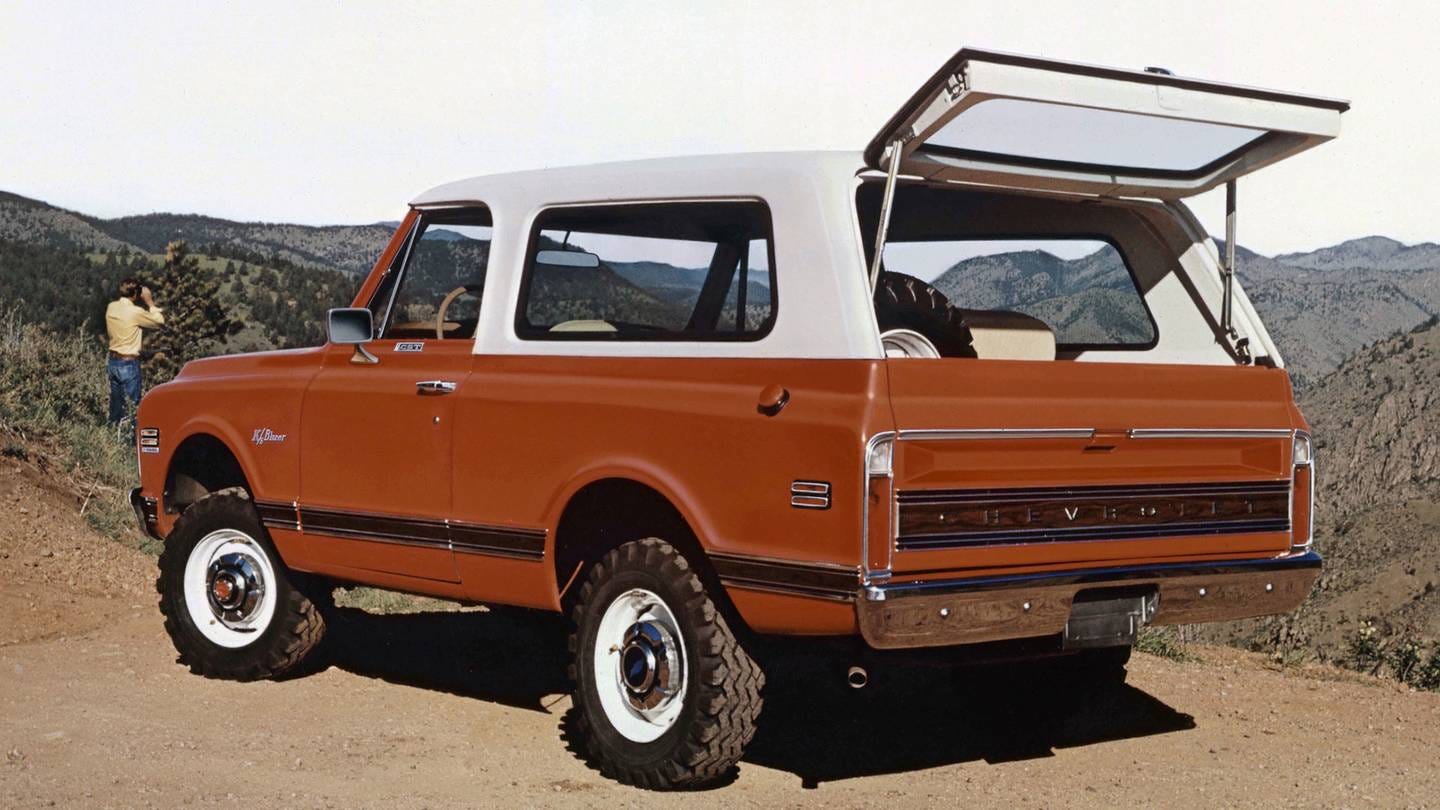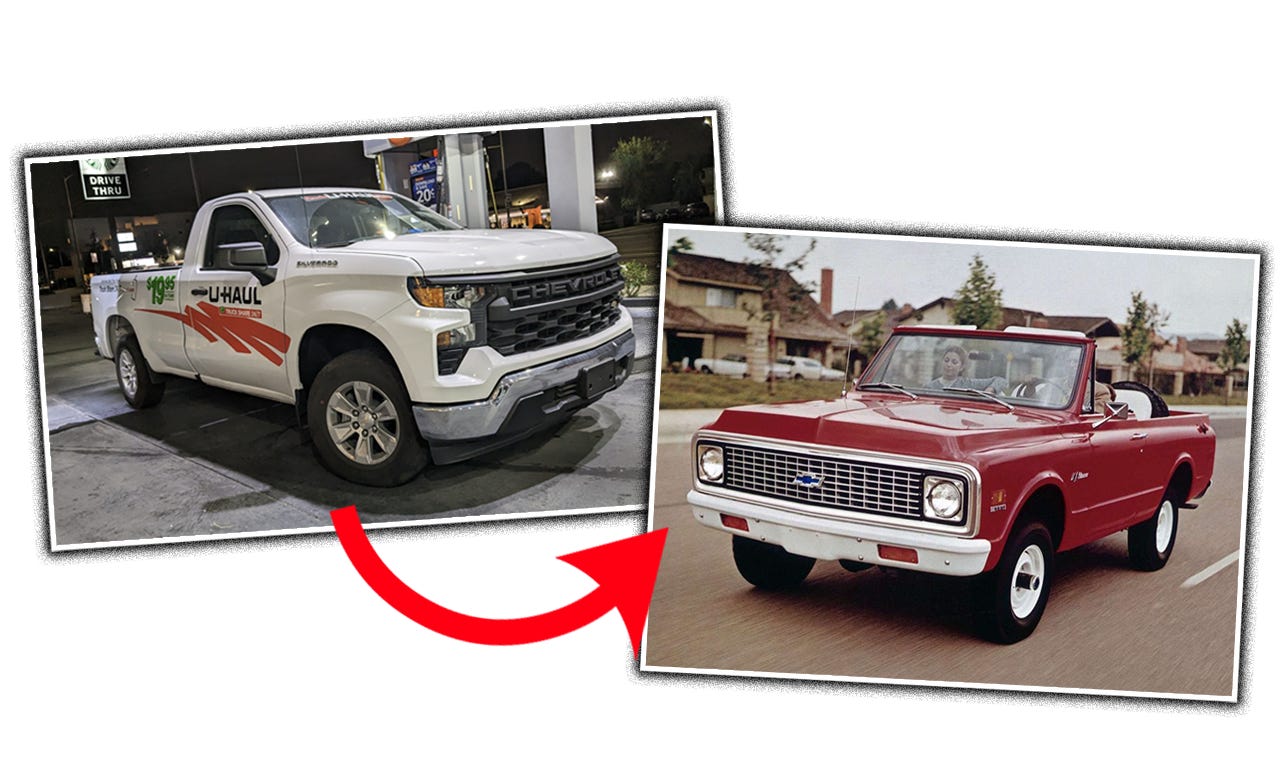The K5 Blazer Never Should've Left: Hold Fast
Retroism is big in America. Like true crime or Republican Party, it has a stronghold on people who seek for a good time recreationally. No company does this better than Jeep, who profits off an adventure vehicle with a World War II design. The same attributes that worked in combat — taking the roof off, the doors off, a rugged chassis with a four-wheel-drive system — presented a similar connotation associated with freedom in the consumer market.
Later, Wranglers would eventually become useful to tow behind motorhomes so said adventurers could leave it behind if they needed to go into town where space for large vehicles could be limited. That’s how I ended up selling one to my parents. But Jeep can’t have it all to itself. That’s why Ford has relaunched the Bronco and other companies are trying to push for a vintage vibe in new cars.
Here’s the thing: Jeep will crash test a Wrangler that will roll over and sell it to the public. And not for the first time. On that logic, it opens the door for more automakers to venture on the same path Jeep has forged. The first one should be Chevy with a reboot of the K5 Blazer.
(Welcome to the first installment of Hold Fast. This is a focus on cars that have fallen out of the limelight but should never lose the glory. Vehicles could be good, bad, have a lukewarm reputation, or rather be forgotten by society; and still get a mention here.)
Light Efforts
Get ready for a case of déjà vu: the Jeep CJ (Wrangler predecessor) is here, the Ford Bronco is here, and General Motors is laggard. They need to jump in after two-thirds of the Detroit Greats have already joined the fray. This is the 1960s, where the priority of trucks remained on the farm, and SUVs were starting to enter the mainstream. Mass transportation still gave the vibe of brutes that moved Henry Fonda in The Grapes Of Wrath. The potential of utility vehicles was unclear. So when it was time for Chevrolet to contribute to the cause, it was an exploration.
It was also a survey based on customer’s needs. This, I think, will come in handy when it comes to what the Blazer could be today. But let’s pull some notes from the March 1969 article from The New York Times previewing the model just before it went on sale:
It was designed as a simple basic open unit with a single seat for the driver.
A removable fiberglass hardtop roof was available with windows to convert the open unit into a closed station wagon.
Options include 15 colors as well as two for the hardtop shell, power steering, power brakes, bucket seats, carpets, tinted glass, and air-conditioning.
Heavy-duty springs, shock absorbers, clutch, and radiator were available too.
Expected to sell between $2,200 and $3,000 for a basic Blazer.
My favorite quote is that the buyer “can tailor the unit to his recreational or business need.” Let’s break this down, shall we?
First of all, the driver seat was standard. Not the passenger seat, nor the back bench able to sit three more people. Not even the hardtop roof to shelter you from increment weather. You had the barebone essentials but then absolutely nothing in the way of convenience.
If the Blazer looked like a pickup, that’s because it was. Early iterations of it was based on the C/10 or K/10 versions of the company pickup built at the time. This was how costs stayed down and why the project was greenlit on a guarantee of minimal losses if it turned out SUVs weren’t all they cracked up to be.
What’s funny is that the K5 Blazer although was a Jeep or Bronco rival; it ended up being a size or two bigger than inclined on account of pickup truck proportions. It didn’t matter though because Chevy had a hit on its hands.
The business tactic of a blank canvas for buyers worked. While initial success was plagued by strikes at the factory plant in St. Louis, Missouri, sales grew from 4,935 trucks in 1969 to 44,266 by 1972. The customer base was virtually ambiguous, with anyone from a farmer to a fisherman to a stock broker finding appeal with a K5 Blazer.
I haven’t even talked about power because it’s not all that relevant. For speed purposes, a choice of six- and eight-cylinder engines were available to deliver glob amounts of power when needed. Four-wheel-drive was available as well as both manual and automatic. But for this truck’s purpose, who cares?
Chevrolet changed it for 1973 with a box that lasted well into the 1990s. A short-lived 3rd generation arrived before it was renamed the Tahoe when the Blazer started to appear on small trucks and SUVs relegated to light duty.
Worthy Of A Reboot
Why I choose the K5 Blazer as the first car to Hold Fast is how well it could work in today’s market. The price it demanded in 1969 is well sought after an inflation-crazy world. $2,200 translates to roughly $18,400 in 2023. You can’t buy a new car for that anymore. A Mitsubishi Mirage will cost you barely more than that and that’s the cheapest.
Yet, the size and the appeal of the rugged truck is more friendly compared to the modern Jeep Wrangler. If we’re talking about a K5 reboot, it wouldn’t take much more than a two-door Silverado pickup to convert the Blazer into the high-riding convertible of your dreams.
Recently, somebody has. For this year’s expo of car modders known as SEMA, a company called Flat Out Autos did just that. Converting it through the same formula as the original K5, it has two doors, a roll cage, a bench seat for rear passengers, off-road tires, and some other kit that makes it cost $202,000. Yikes.
Now, General Motors recently absolved another series of strikes thanks to a new deal with the UAW for better pay because companies like Chevy and GMC rake in profits. If there was solely a platform for giving back exactly what people want, a K5 in the ballpark of less than $30,000 is a good start.
People would kill for a decently-sized truck that had an $18k price tag. Using the ‘base Blazer’
formula, capping the options to a set amount to remain affordable, and utilizing existing materials, it could present an exercise that does not prioritize making a business profit. Break the trend of cars getting more expensive yearly.
The K5 could use the trucks Chevy sells to U-Haul. That is a basic WT-named work truck with the bare essentials, barring leather seats and any sort of extravagant frills. Realistically, what more do you need at that price?
Not every buying priority circles around the latest technology nor the greatest refinement you can eke out of modern car. Sometimes, a winner can sift through the less-is-more philosophy. Now, is this going to happen? Probably not. But it wouldn’t be the first time Chevrolet was late to the party. At the very least, it’s worth looking into.
+++
Photo Credits: Chevrolet, The Autopian


